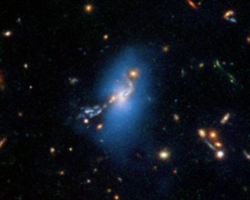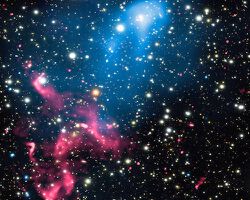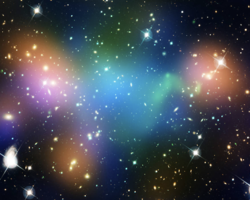Main Page: Difference between revisions
No edit summary |
No edit summary Tag: Reverted |
||
| Line 9: | Line 9: | ||
Research interests: Gravitational Lensing, Cosmology, Galaxy Clusters, Large Scale Structure, Deep Learning, and Astronomical Instrumentation | Research interests: Gravitational Lensing, Cosmology, Galaxy Clusters, Large Scale Structure, Deep Learning, and Astronomical Instrumentation | ||
James leads [[YOUNG]] (Yonsei Observable UNiverse Group). | James leads [[YOUNG]] (Yonsei Observable UNiverse Group).. | ||
|} | |} | ||
Revision as of 09:26, 30 March 2023
Welcome to Myungkook James Jee's Homepage
|
Name in Korean: 지명국 James leads YOUNG (Yonsei Observable UNiverse Group).. |
Recent Science Highlights Featured in NASA  news
news
| (01/05/2023) Ancient Ghost Light -ORPHANED STARS WERE LOST INTO INTERGALACTIC SPACE LONG AGO In the 1960s sci-fi television show "Lost in Space" a small family of would-be planetary colonists get off course and lost in our galaxy. But truth is stranger than fiction when it comes to Hubble Space Telescope discoveries. Thanks to Hubble, astronomers now know about entire families of stars – and presumably their planetary systems – that don't even have a galaxy to call home. We are nestled inside the sprawling Milky Way galaxy, an empire of stars. But there are many stars wandering about inside giant clusters of hundreds or thousands of galaxies. These stars are not gravitationally tied to any one galaxy in a cluster. Read details.
Paper link: Intracluster light is already abundant at redshift beyond unity (Joo & Jee 2023) | |
| (01/06/2017) Double Whammy -Astronomers have discovered what happens when the eruption from a supermassive black hole is swept up by the collision and merger of two galaxy clusters. This composite image contains X-rays from Chandra (blue), radio emission from the GMRT (red), and optical data from Subaru (red, green, and blue) of the colliding galaxy clusters called Abell 3411 and Abell 3412. These and other telescopes were used to analyze how the combination of these two powerful phenomena can create an extraordinary cosmic particle accelerator. Read details.
Paper link: The case for electron re-acceleration at galaxy cluster shocks (van Weeren et al. 2017) | |
|
(04/04/2014) EL GORDO -If someone told you there was an object in space called "El Gordo" (Spanish for "the fat one") you might imagine some kind of planet-eating monster straight out of a science fiction movie. The nickname refers to a monstrous cluster of galaxies that is being viewed at a time when the universe was just half of its current age of 13.8 billion years Read details. Paper link: (Jee et al. 2014) | |
|
(03/02/2012) Cosmic Train Wreck - Astronomers observed what appeared to be a clump of dark matter left behind during a bizarre wreck between massive clusters of galaxies. The dark matter collected into a "dark core" containing far fewer galaxies than would be expected if the dark matter and galaxies hung together. Read details. Paper link: (Jee et al. 2012) |




